The water and rainfall monitoring system primarily consists of a hardware-based water and rainfall monitoring station and a software-based environmental monitoring cloud platform. Using intelligent sensing and data analysis technologies, the system enables real-time collection of hydrological parameters, timely early warning of risk situations, and coordinated emergency response. This effectively enhances the safety and security of water conservancy infrastructure and reduces the risk of flooding.
1.Hardware equipment - water and rain monitoring station
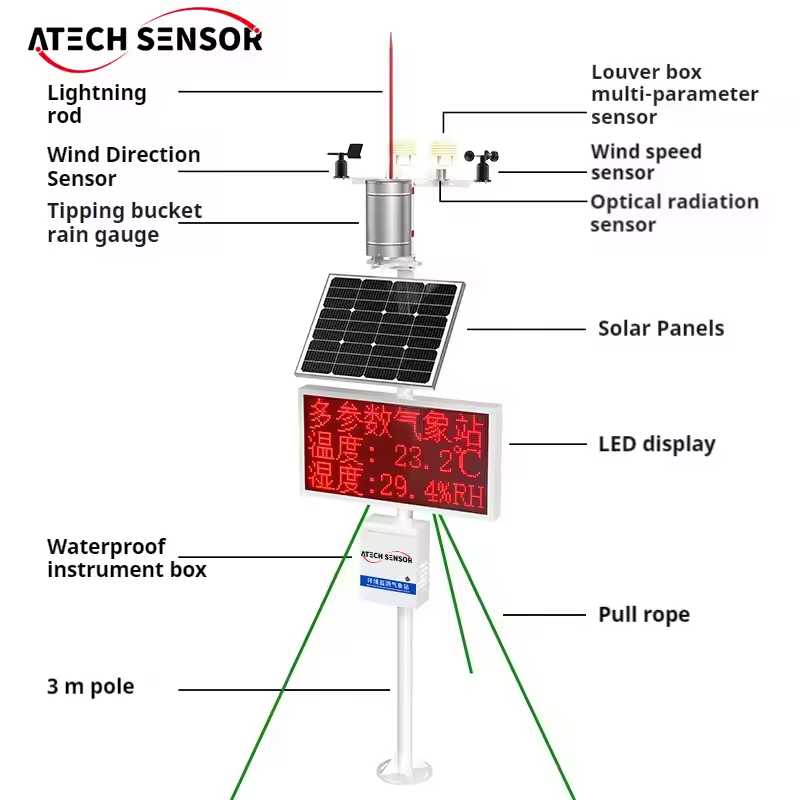
2.High-precision monitoring
As important parameters of water conservancy project operation and scheduling, the accuracy level of water level, flow and rainfall is directly related to the scientificity of reservoir storage and discharge decisions, the timeliness of flood warning, and the rationality of water resource allocation.
The water level/flow meter in the water and rain monitoring station adopts the principle of radar measurement, which does not need to excavate the river or contact the water body, avoiding siltation corrosion (the contact electrode needs to be cleaned 2-3 times a year), and ensuring the measurement accuracy.
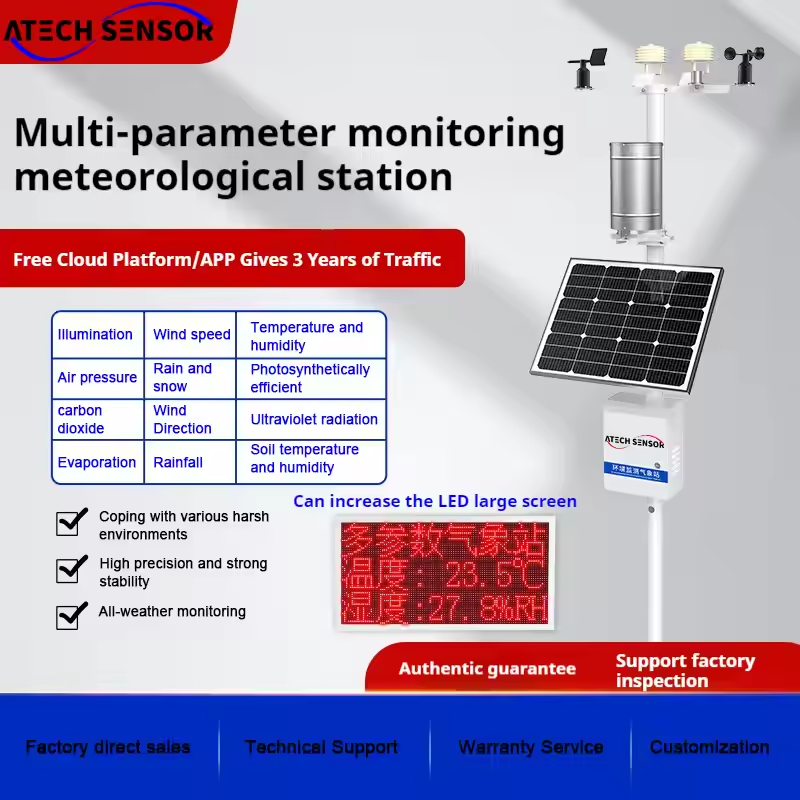
Compared with the ultrasonic water level flow meters on the market, the radar waves of radar water level/flow meters can penetrate interference such as heavy rain, fog, and steam (the error of traditional ultrasonic measurement is up to ±5% under heavy rainfall), and can still maintain millimetre-level measurement accuracy even in -40°C frozen rivers or flood turbulence scenarios, which is not only suitable for small flow rivers, but also suitable for monitoring large reservoirs.
The tipping bucket rain gauge in the water and rain monitoring station is in line with the national standard precipitation observation instrument (GB/T 21978.2-2014) in terms of measurement accuracy and structural composition, and has passed the test of the Quality Supervision, Inspection and Testing Center of Hydrological Instruments and Geotechnical Engineering Instruments of the Ministry of Water Resources.
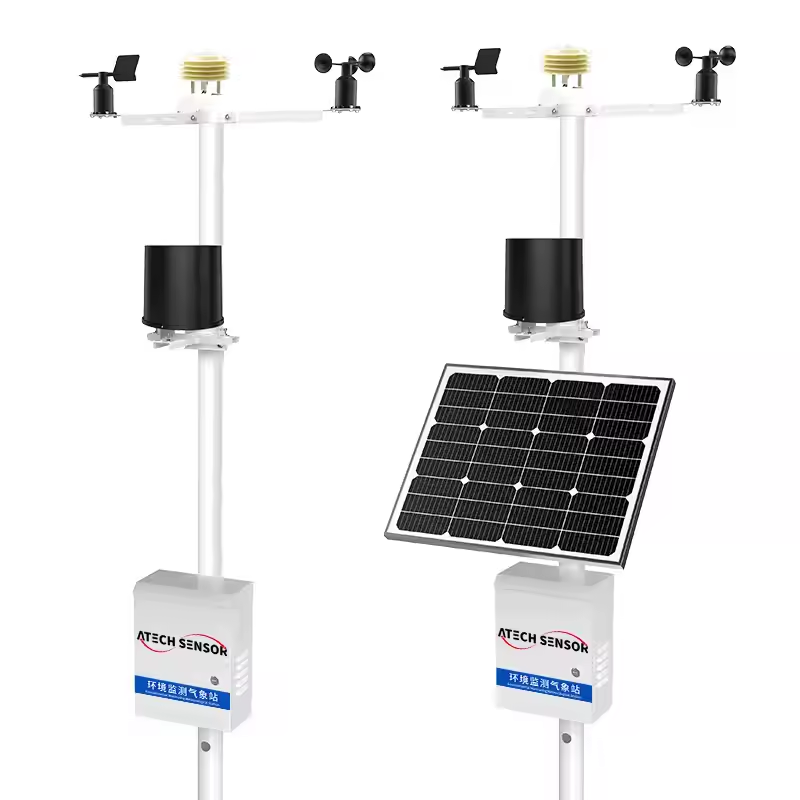
3.Multi-parameter monitoring
Changes in weather may exacerbate the risk of flooding, and changes in water quality may threaten people's water security. In order to enable users to detect potential hazards in a timely manner and to mobilise water resources effectively, the water and rain monitoring station adopts a multi-element integrated design that can monitor not only water levels, flow, and rainfall (total rainfall, instantaneous rainfall, daily rainfall, current rainfall) but also wind speed, wind direction, air temperature and humidity, noise, air quality, atmospheric pressure, light, rain and snow conditions, ultraviolet rays, total radiation, negative oxygen ions, and water quality (dissolved oxygen, turbidity, ammonia nitrogen, residual chlorine, etc.).
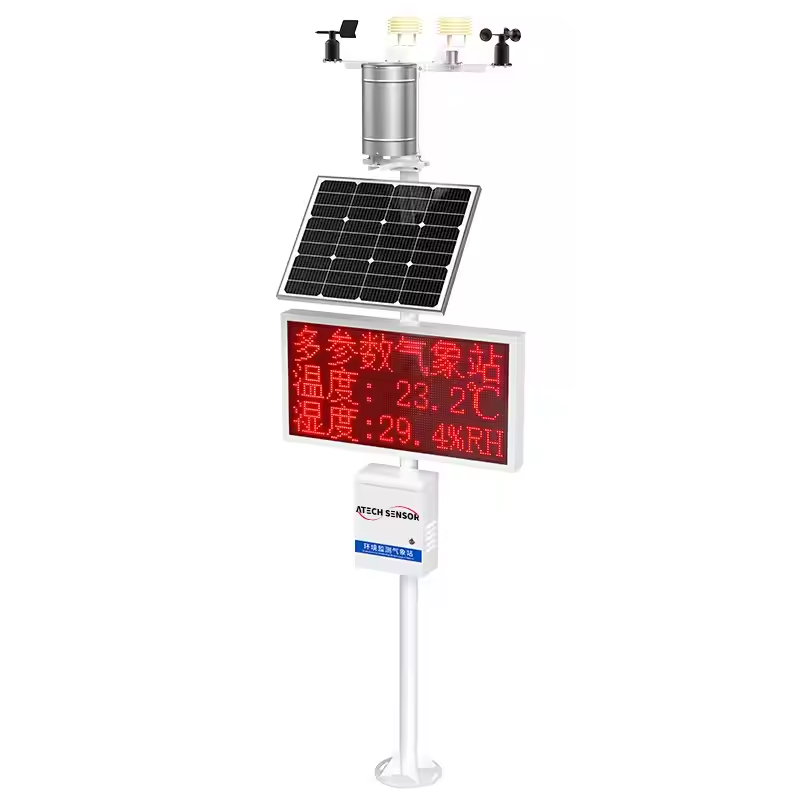
4.The power supply is stable
The water and rain monitoring station supports mains power, solar power supply and dual power supply (solar power supply and mains power) power supply mode, and users can choose according to the actual situation. 5.It is convenient to view on-site data The water and rain monitoring station supports the data display scheme that combines an LED display screen and an electronic control box touch screen, which effectively improves the convenience and professionalism of on-site operation. The LED display screen can be placed in a prominent position of the monitoring station to display key monitoring data in real time, making it convenient for users to quickly obtain core information. The touch screen embedded in the electronic control box has a complete data interaction interface, supporting professional operations such as data query and monitoring parameter configuration.Multi-screen collaboration not only meets the needs of technicians for accurate data analysis, but also realises the requirements of non-professionals for rapid access to information, thus providing timeliness guarantee for emergency response and scientific decision-making.
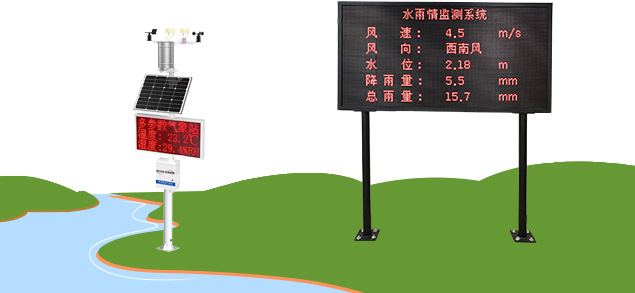
6.All-round protection
The electric control box of the water and rain monitoring station adopts a metal spraying process, which enhances the anti-corrosion performance of the electronic control box and can adapt to a variety of harsh environmental conditions in order to better protect the internal precision devices. The fixing method of the clamp ensures firm installation and can effectively resist the impact of extreme weather such as strong winds and heavy rain.The high-strength bracket provides reliable structural support for the water and rain monitoring station, which can effectively resist the influence of natural environments such as wind and snow, and provides a stable installation reference for the sensor to avoid measurement errors caused by structural deformation.The ultra-standard design vertical pole (3m vertical pole and 2m crossbar) solves the problem that the crossbar of the traditional online water and rain monitoring station will gradually tilt down by 5-7mm due to long-term use, resulting in a decrease in measurement accuracy.
7.Software platform - environmental monitoring cloud platform
The environmental monitoring cloud platform is a comprehensive service platform developed and designed to benefit users, offering features such as real-time data display, historical data queries, intelligent control, video monitoring/capture, over-limit alerts, and large-screen visualisation, whilst being completely neutral and supporting secondary development.
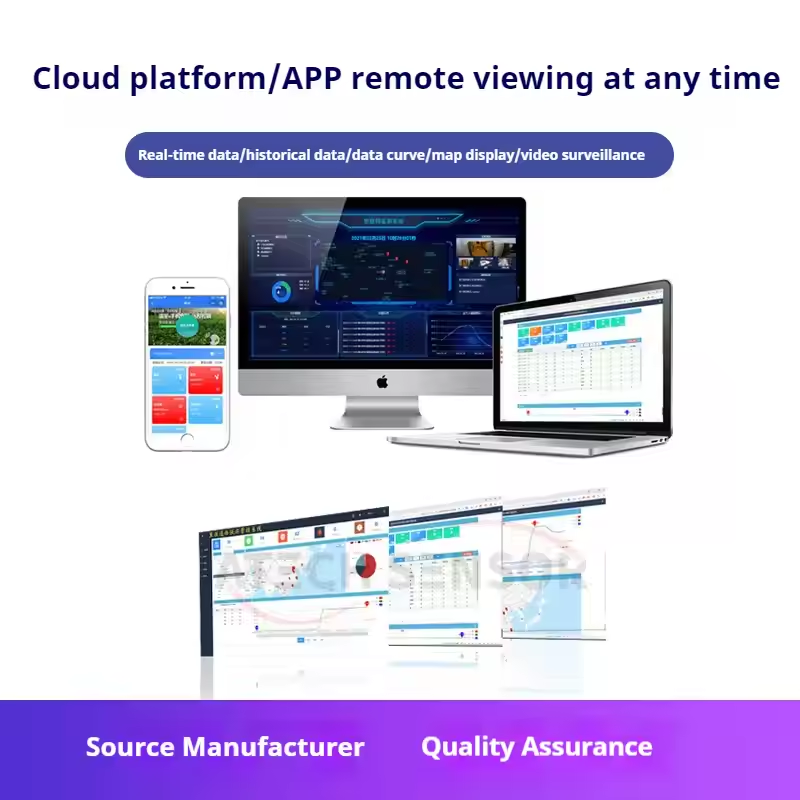
With the arrival of summer, flood control and drought management work has reached a critical stage. With real-time, accurate, and continuous data monitoring and early warning functions, the rain monitoring station can play an important role in early risk identification, early warning information release, scientific engineering scheduling, and optimal allocation of water resources, minimising the loss of water and drought disasters, and providing solid water security for the stable and healthy development of the economy and society, as well as enabling the people to live and work in peace and contentment.

